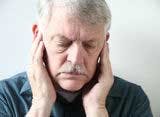Evidence-based diagnostic standards for temporomandibular disorders
The new criteria, supported in part by the National Institutes of Health, include an improved screening tool to help clinicians distinguish the most common forms of TMD and reach accurate diagnoses supported by scientific evidence. Historically, diagnostic criteria for TMD have been based on a consensus of expert opinion and are often the result of a shared clinical perspective. None have been rigorously tested by scientists. The latest criteria are available online at the International RDC/TMD Consortium Network website.(2) R
The physical assessment begins with a patient questionnaire that is specially designed to detect pain related to TMD. If TMD is found, the protocol is to use the diagnostic criteria to distinguish between the common subtypes of TMD. In field tests, the diagnostic criteria for painful TMD were found to have at least 86 percent sensitivity and 97 percent specificity.(1) Sensitivity refers to how well a test identifies a person with a given ailment, while specificity characterizes the ability to identify correctly those who are not affected.(1)
Axis II, the psychosocial assessment, screens patients to assess pain location, pain intensity, pain-related disability, psychological distress, degree of jaw dysfunction, and presence of oral habits that may contribute to the dysfunction. If more information is needed, a more comprehensive follow-up questionnaire is available to tap into additional anxiety measures and the possible presence of other pain-causing physical ailments. Both instruments have been scientifically validated. By using these guidelines, the clinician can personalize treatment to not only treat the physical TMD, but to treat the entire person. This may include things like relaxation techniques and biofeedback.(2)
A TMD Pain Screener can be used to assess the presence and extent of pain.(3) Questions include:(3) In the last 30 days, on average, how long did any pain in your jaw or temple area on either side last? Answers include: no pain; from very brief to more than a week, but it does stop; continuous.
In the last 30 days, have you had pain or stiffness in your jaw on awakening? In the last 30 days, did the following activities change any pain (that is, make it better or make it worse) in your jaw or temple area on either side? Chewing hard or tough food; opening your mouth or moving your jaw forward or to the side; jaw habits such as holding teeth together, clenching, grinding or chewing gum; other jaw activities such as talking, kissing or yawning?
There is a short version of the screening instrument, and a long version.










